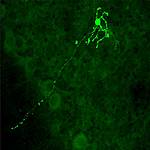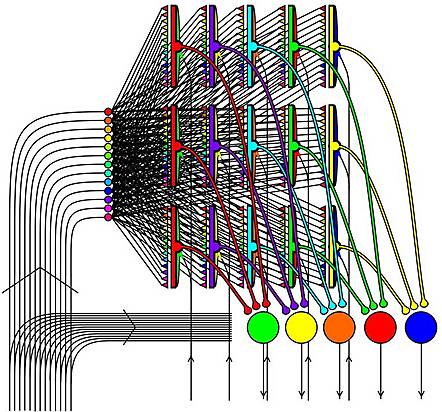Haptics discrimination is about making correct interpretations of the sensory consequences of specific movements. SENSOPAC aims to explore the principles of sensorimotor associations  occurring within the neural circuitry of the brain during haptic discrimination processes. Since the computational advantages of the brain to a large extent depends on distributed, parallel processing, it is necessary to model the activity distribution within full functional neuronal systems. However, in the mammalian brain, a sufficient detail of neuronal microcircuitry understanding is at present only within reach for a few cerebellar control systems. Therefore, SENSOPAC\x92s neuroscience research is focused on the cerebellum. The output of the neuroscience research will be a simulated, large scale model system of the investigated neuronal circuitry, which will be applied to the robotic system of SENSOPAC to provide it with a haptic discrimination capability.
occurring within the neural circuitry of the brain during haptic discrimination processes. Since the computational advantages of the brain to a large extent depends on distributed, parallel processing, it is necessary to model the activity distribution within full functional neuronal systems. However, in the mammalian brain, a sufficient detail of neuronal microcircuitry understanding is at present only within reach for a few cerebellar control systems. Therefore, SENSOPAC\x92s neuroscience research is focused on the cerebellum. The output of the neuroscience research will be a simulated, large scale model system of the investigated neuronal circuitry, which will be applied to the robotic system of SENSOPAC to provide it with a haptic discrimination capability.
SENSOPAC\x92s neuroscience efforts reach from the most basic characterisation of membrane and synaptic properties of individual neurons, through systems level characterisation of circuitry and the analysis of activity distribution within the neuronal network under behaviour and learning. The microcomplex structure is the fundamental organizational principle within the cerebellar neuronal circuitry, and many of the research efforts aim at elucidating further details of the connectivity patterns with respect to this organisation. Behavioural studies are also directed towards the understanding of microcomplex interactions during motor performance, as well as the interactions between the motor cortex and its connected cerebellar microcomplexes. The output of the cellular and synaptic analysis will be a detailed model of the cerebellar neuronal circuitry representing parts of a full functional cerebellar system. This detailed model of circuitry function will be plugged in to replace specific parts of the overall simulated system where a complete analysis of the brain circuitry computations of local sensorimotor associations is required.

|
The cerebellar microcircuitry operates in parallel microcomplexes |
Neuronal network simulator:
An open source spiking neural simulator has been developed in the framework of SENSOPAC, the code can be found here. Therefore, now the whole computational neuroscience research community can freely access to the simulator and further develop it according to its new necessities. See more details, a hello world example and an explanatory presentation at the link above.

